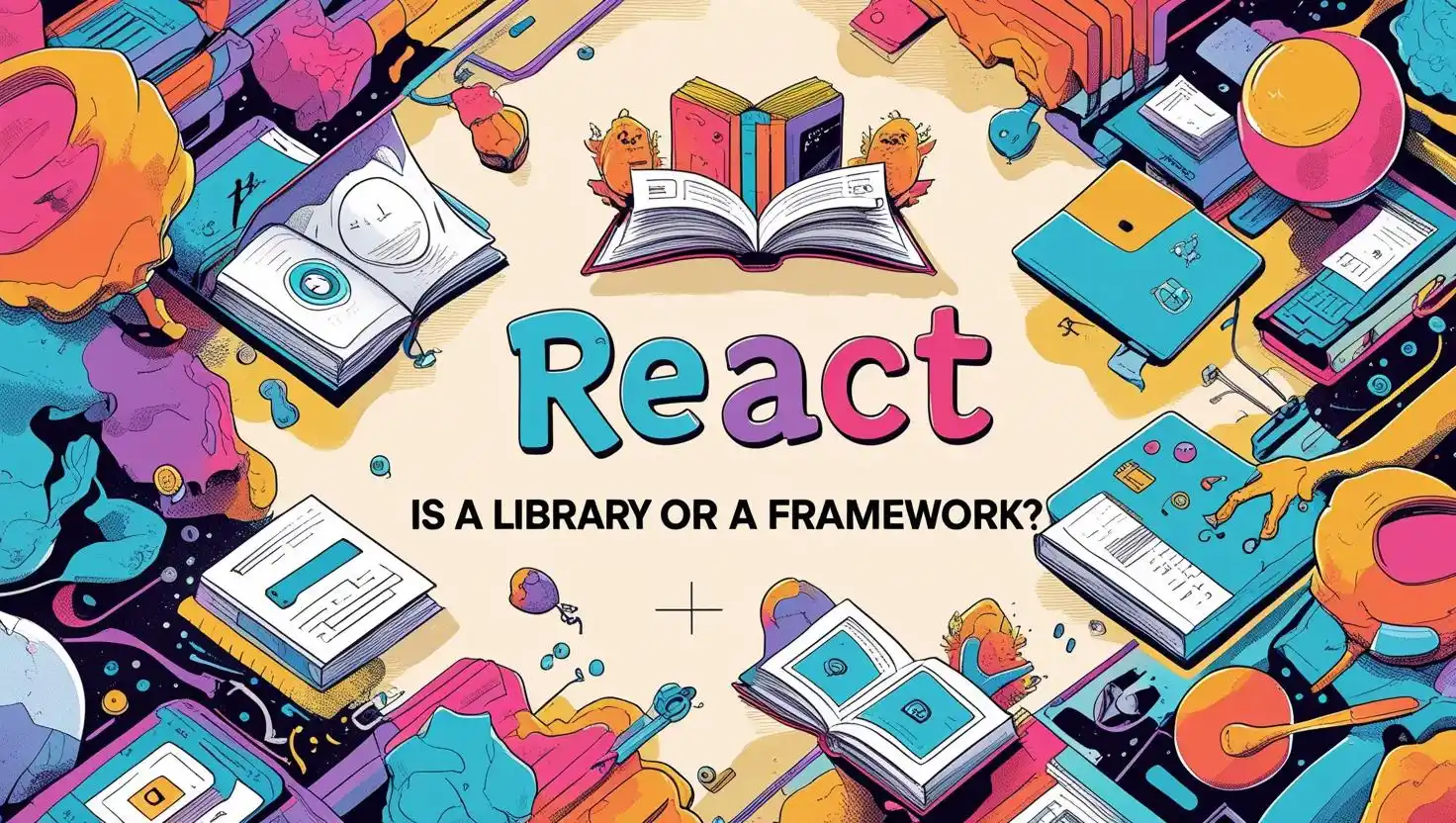Is React a Library or Framework? Unraveling the Big Debate

Hello there! I’m Somen, and today, I’m excited to help you unravel one of the most debated questions in web development — Is React a library or a framework? Whether you’re just beginning your coding journey, curious about how different tools work, or aiming to strengthen your developer knowledge, you might have come across this question in many tech blogs and forums. In this article, we’ll break down what makes React so unique, understand why the library vs. framework debate even exists, and see how it matters for your own learning or projects. Let’s get cozy, grab a notebook (if you like), and explore this together in easy, digestible pieces!
What Does It Mean When We Call Something a Library or a Framework?
The Basics: Definitions in Simple Words
Think of a library and a framework as different types of toolkits for building web applications. But what’s the difference?
- Library: Imagine you’re building a LEGO house. A library is like a box of special LEGO pieces you choose and use whenever you want. It gives you helpful tools, but you decide when and how to use them.
- Framework: Now, think of a framework as a ready-made LEGO set with instructions. It tells you where each piece goes, guiding your building process and expecting you to follow its rules and patterns.
Quick Comparison Table: Library vs. Framework
| Library | Framework | |
|---|---|---|
| Who Controls the Flow? | The Developer | The Framework |
| Flexibility | Very Flexible | More Structured |
| Examples | React, jQuery | Angular, Vue.js |
| Main Focus | Solving Specific Problems | Providing Full Structure |
I hope this table helps you quickly spot the key differences!
Where Does React Fit In – Library or Framework?
Understanding React’s Purpose
React, created by Facebook in 2013, is one of the most popular tools for building modern user interfaces. But if you ask developers in your circle, some call it a library while others say it acts like a framework. Why so much confusion?
Here—let me make it easy:
- React is officially a library. This means it focuses on a specific part of web development: building dynamic UI components (the parts users actually see and interact with).
- Yet, with extra tools, React feels framework-like. When you add routing (moving between pages), state management (handling data), and other features, your React project starts to look and work like a full framework.
The "Framework" Feeling – Why People Call React That
Imagine React as the engine in a car: by itself, it only “drives” the user interface. But if you add wheels, seats, a steering wheel (tools like React Router or Redux), you get the whole car—a complete web application. This flexibility is what makes React so powerful, but also what creates debate! The boundaries blur since you can make React as “big” or as “focused” as you need.
Why This Debate Matters in Real Web Development
Which Should You Choose for Learning?
If you’re just starting out, you might wonder why it even matters if React is a library or a framework. Here’s why:
- Learning Curve: Libraries like React let you start small and learn as you go. Frameworks might be more structured, but they have more rules from the start.
- Project Needs: For quick prototypes or apps with changing requirements, a library offers flexibility. If you need one way to do everything, go for a framework.
What Do the Experts Say?
Most experts, including the official React team, call React a library. But in everyday use, it’s very common to hear “React framework” because its ecosystem—the extra tools and add-ons—gives you many framework-like powers for web development.
SEO and the Modern Web
If you want your app to shine in Google visibility and search rankings, knowing how React works with search engine optimization is key. Unlike traditional frameworks, React’s single-page nature can be tricky for SEO. That’s why many React developers use tools like Next.js to get strong SEO benefits. We’ll cover these tricks in future articles on MATSEOTOOLS!
Conclusion: What Should You Remember?
Let’s bring it all together. React is officially a JavaScript library, focused on building user interfaces. But with its huge ecosystem, you can turn it into something that acts and feels like a framework. The main difference comes down to flexibility (React lets you pick your tools) versus structure (frameworks guide most choices for you).
So, next time someone asks, “Is React a library or a framework?”—you can confidently say it’s a library at heart, but with enough power to build apps just like a framework does. And honestly, what matters most is how you use it to solve real problems and create interactive websites!
I hope this quick explanation makes things clearer and gives you a solid start. If you’re curious to dive deeper, I invite you to read the full article, where we’ll share more real-world examples, code snippets, and expert opinions to guide your journey.
Written by Somen from MATSEOTOOLS
 Some Question
Some Question


